top predator
Well-Known Member
The reasoning behind sorting rimfire ammunition by rim thickness sounded very valid to me. The concept is that headspacing varies when the thickness varies, and since rimfire ammo headspaces on the rim of the cartridge, if you can take out the variances by measuring and lotting "like" thicknesses, you will improve accuraccy. Just as in reloading, differing overall lengths and seating depths produce differing results, hampering steady consistancy.
Enter the rim thickness gauge.
As always looking for a way to economically improve performance, I finally decided to purchase a rim thickness gauge. I did a search on the net to find manufactures when I cam across a froum thread on making your own rim thickness gauge. After reading it, I immediately went to my reload bench to get started, and after just a few minutes, put together my own thickness gauge.
Items needed: calipers, and one spent or new .243 case. In the original thread, the gentleman used a .223 case, which seemed a natural choice, but I found that it scrapped off the valuable lubrications on rimfire ammo. So I went with .243. I also had some 3M non skid stick on material around so I thought I'd use it also.
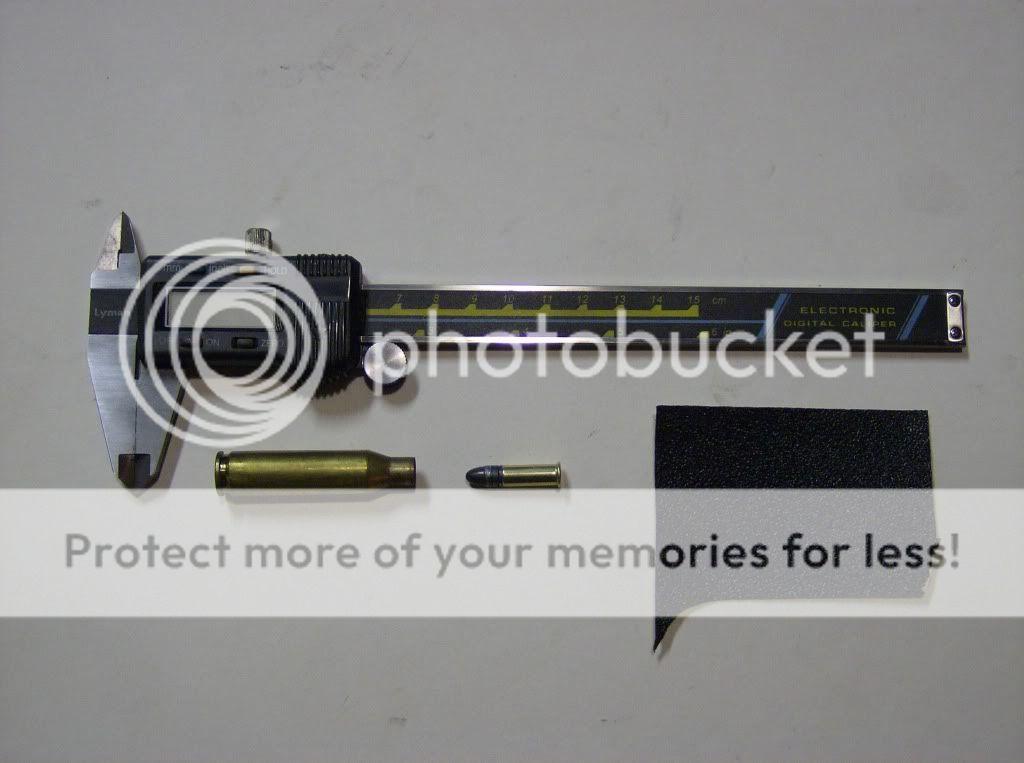
I took the casing and put it on the trimmer to give it a nice flat and even lip. Ironically I used the same calipers used for the rim thickness gauge to so several measurements while turning the casing to ensure it is as flat and even as I can get it. I then took a neck brush to clean the inside of the neck of any residue. I shined the brass up a bit with never dull (for looks) and wrapped the non skid around the casing for grip and to designate it as a casing I want to keep for a special purpose.
I then simply put the casing in the calipers, closed the jaws and zeroed out the calipers.
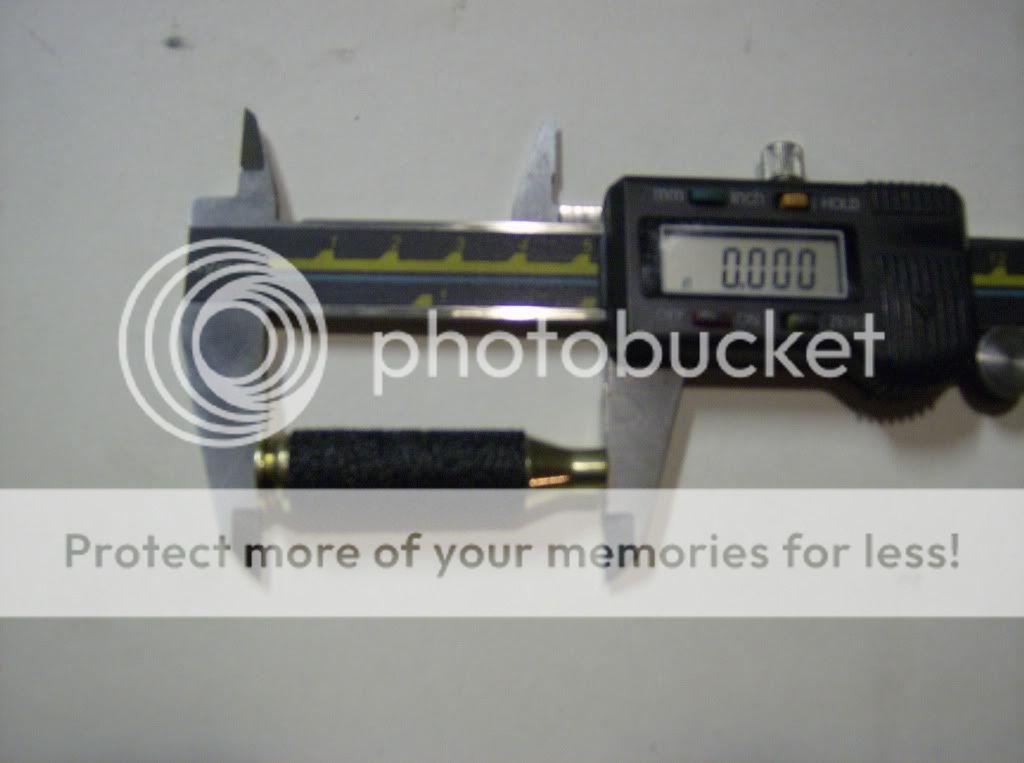
To measure rim thickness on rimfire ammo, just slip the rimfire round into the opening of the case. The mouth of the .243 case bumps up against the rim and is not too wide as to allow the rimfire case from falling in the .243 case.
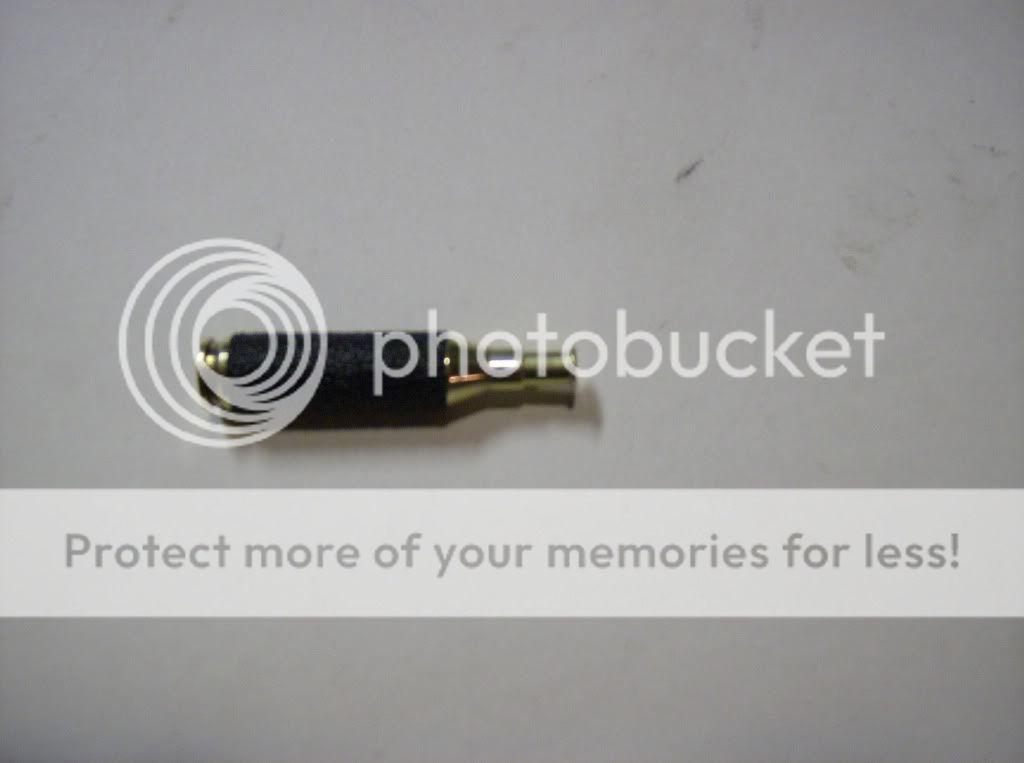
Now just put the calipers back on the .243 case with the rimfire case in it and take a measurement. The reading is the rim thickness.
My first 3 measurements....
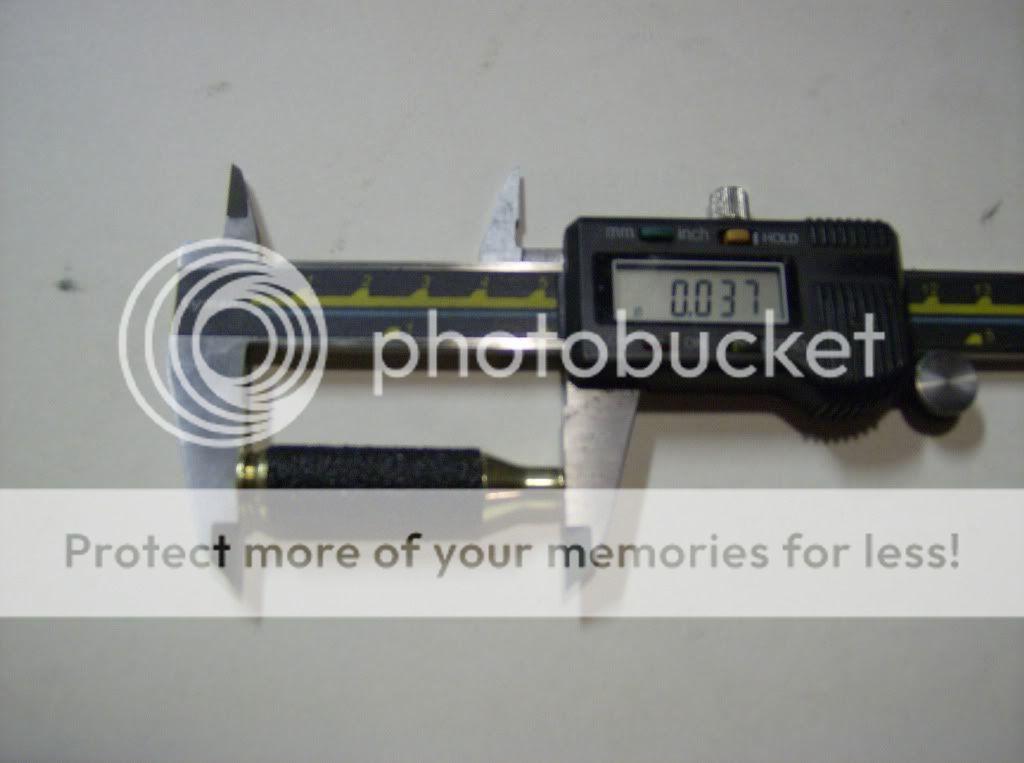
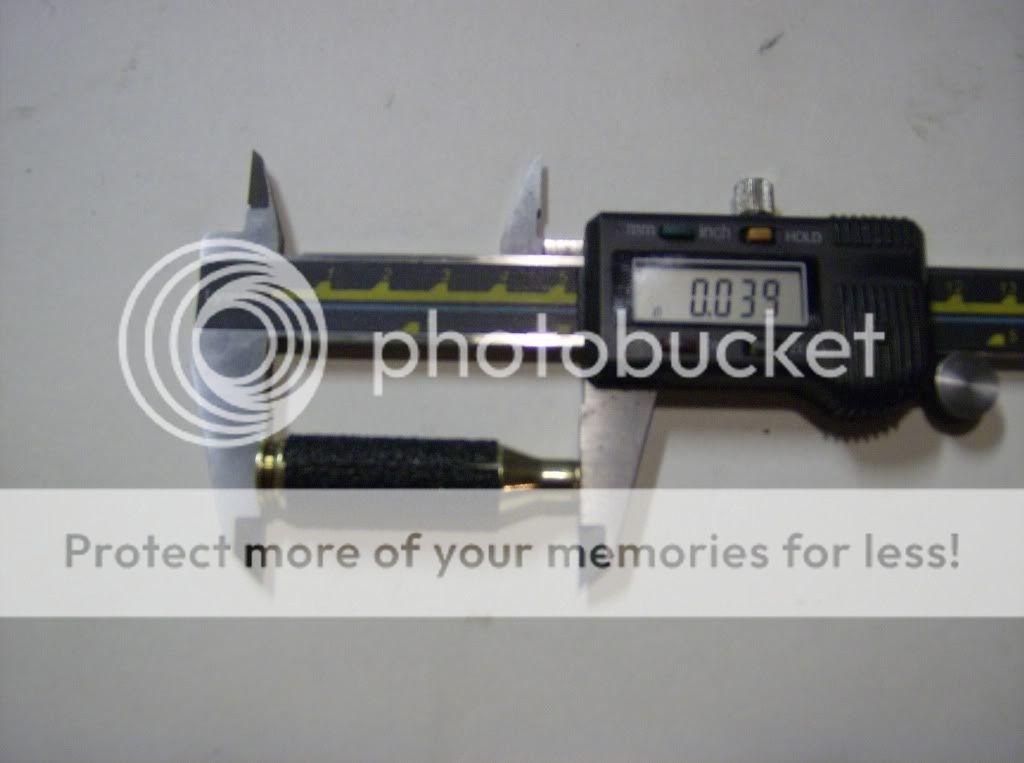
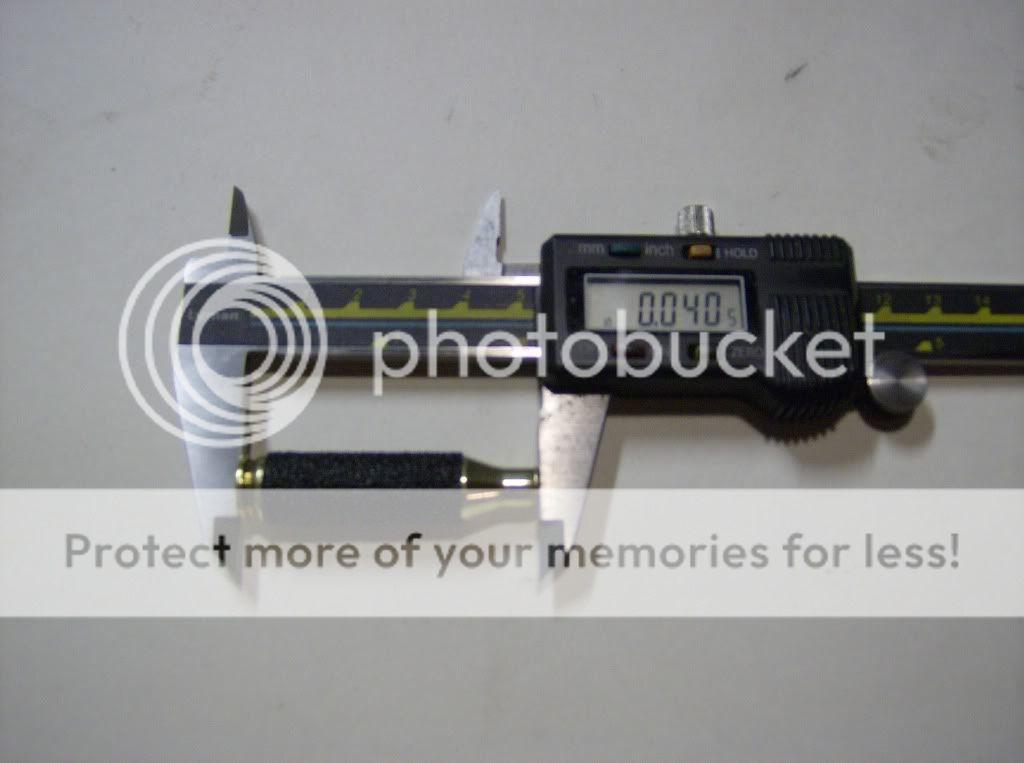
Now to weigh a few more and see if the concept is real, which means another one of my long winded ammo tests. Will be updating with results soon.
Enter the rim thickness gauge.
As always looking for a way to economically improve performance, I finally decided to purchase a rim thickness gauge. I did a search on the net to find manufactures when I cam across a froum thread on making your own rim thickness gauge. After reading it, I immediately went to my reload bench to get started, and after just a few minutes, put together my own thickness gauge.
Items needed: calipers, and one spent or new .243 case. In the original thread, the gentleman used a .223 case, which seemed a natural choice, but I found that it scrapped off the valuable lubrications on rimfire ammo. So I went with .243. I also had some 3M non skid stick on material around so I thought I'd use it also.

I took the casing and put it on the trimmer to give it a nice flat and even lip. Ironically I used the same calipers used for the rim thickness gauge to so several measurements while turning the casing to ensure it is as flat and even as I can get it. I then took a neck brush to clean the inside of the neck of any residue. I shined the brass up a bit with never dull (for looks) and wrapped the non skid around the casing for grip and to designate it as a casing I want to keep for a special purpose.
I then simply put the casing in the calipers, closed the jaws and zeroed out the calipers.

To measure rim thickness on rimfire ammo, just slip the rimfire round into the opening of the case. The mouth of the .243 case bumps up against the rim and is not too wide as to allow the rimfire case from falling in the .243 case.

Now just put the calipers back on the .243 case with the rimfire case in it and take a measurement. The reading is the rim thickness.
My first 3 measurements....



Now to weigh a few more and see if the concept is real, which means another one of my long winded ammo tests. Will be updating with results soon.
